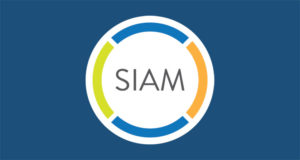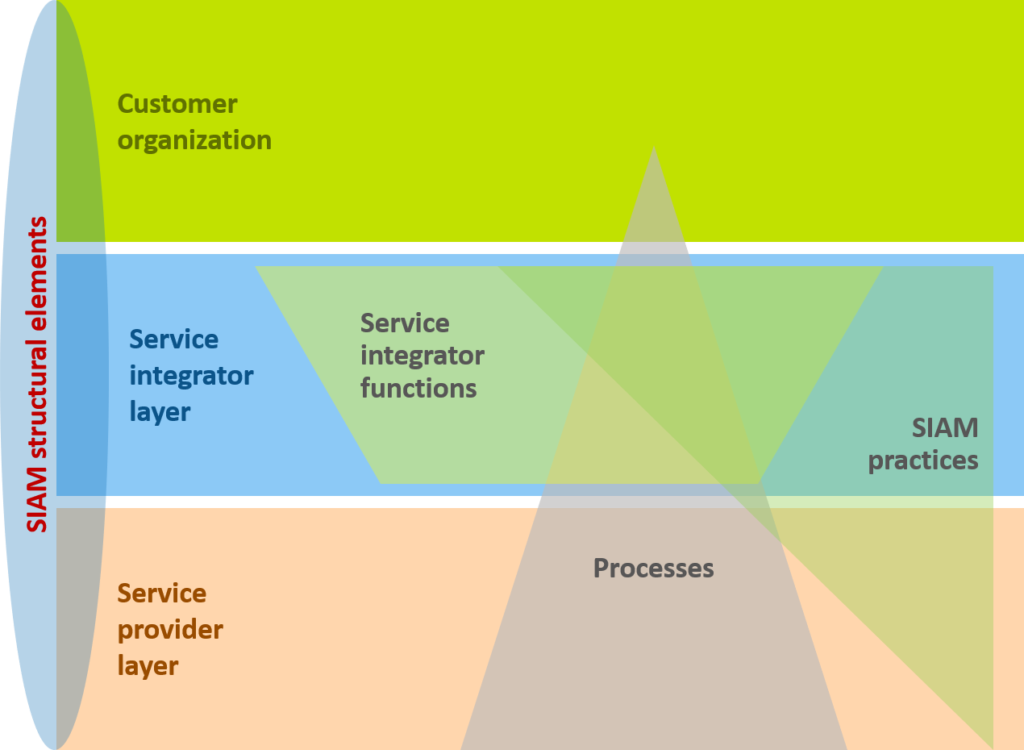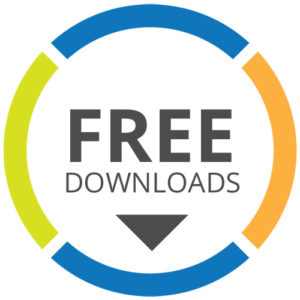Put simply, SIAM is a way to bring clarity to a complex supply environment.
It allows you to focus on end to end value and iden tify all of the service providers that support that value. SIAM helps your service providers to understand where they fit into the big picture and how they contribute to business outcomes.
tify all of the service providers that support that value. SIAM helps your service providers to understand where they fit into the big picture and how they contribute to business outcomes.
You can see the official description below.
“SIAM is a management methodology that can be applied in an environment that includes services sourced from a number of service providers. SIAM has a different level of focus to traditional multi-sourced ecosystems with one customer and multiple suppliers. SIAM provides governance, management, integration, assurance, and coordination to ensure that the customer organization gets maximum value from its service providers.”
Source: SIAM Foundation Body of Knowledge – download for free here.
Why do I need SIAM?
Imagine this scenario.
You’re accountable for a critical business system – let’s use the accounts system as an example. You get a phone call in the middle of the night to say that no one can send or receive any payments. Business processes are failing and the consequences could be huge. No problem! You call your supplier for the application. That should fix things. But they deny all knowledge of an issue. It must, they suggest, be an infrastructure problem. So you call the infrastructure team on their out of hours number. Not us, they say, have you tried the security team? We know they were doing some patching last night. The clock is ticking, and you’re getting nowhere fast.
You might need to imagine this scenario, or it might be one you’ve already experienced. Businesses are more and more reliant on automated services, and those services are more and more likely to be provided by a complex network of service providers.
Think about how different things could be. In a SIAM model, this type of incident would be dealt with collaboratively across all of your service providers. With everyone focused on end to end service delivery rather than their own contractual targets, you will get the outcome you need much more quickly. And of course, this is just the start of what SIAM can do. Many organizations start from this reactive position, using SIAM to bring some cooperation to their service delivery. But in the longer term, building a collaborative culture across your ecosystem has huge benefits leading to innovation and improvement.
Who is SIAM for?
SIAM is typically adopted in larger organizations but it’s actually for any type and size of organization. The principles and practices remain the same, although the roles and resources required may be more or less.
What are the SIAM roles?
“SIAM introduces the concept of a service integrator, which is a single, log
ical entity held accountable for the end to end delivery of services and the business value that the customer receives.”
The SIAM ecosystem includes three layers:
- Customer organization
- Service integrator
- Service providers, which may be internal, external, or both
Many customer organizations spend huge amounts of time carrying out individual supplier reviews and performance meetings across their supply chain. Introducing the service integrator role shifts the focus to value and end to end service management.

What are the benefits of SIAM?
There are many benefits to be gained by adopting SIAM. They include:
- Improved service quality
- Optimized costs and increased value
- Improved governance
- A scalable, flexible supply network
The very first organizations who adopted SIAM used it to support them as they moved from a single, monolithic outsourced contract to work with a range of specialist outsourcers. They knew they were getting poor value for money from their existing contract, but they also needed to be sure that they would be able to get value from the new environment.
What are the challenges of SIAM?
Adopting SIAM is a significant organizational transformation, and there will be challenges along the way. These can include:
- Building a business case
- Culture change, organizational change management and building a culture of collaboration
- Commercial challenges and existing contracts being misaligned
- Automation and tooling
How do SIAM and IT service management/ITIL fit together?
There is often some confusion about how SIAM and IT service management interact. Does SIAM replace (for example) ITIL processes and procedures? The answer here is no. Many SIAM models are built on processes that you would be very familiar with including incident and change management. It’s easier to think of SIAM as building on and extending these processes, adapting them for a multi-supplier environment. For example, we might know how to do incident management, but do we know what to do when that incident spans fifteen different service providers? This is where SIAM can help.
And of course, SIAM isn’t just for IT. We can extend the scope of SIAM across the enterprise, incorporating areas such as HR, logistics, and facilities.
What does the service integrator do?
The service integrator provides “governance, management, integration, assurance, and coordination”, but what does that actually mean? A huge amount of the service integrator role is about building the culture of collaboration and communication between all the different service providers in an environment. This can include getting external service providers to work together even though they are competitors, and working with internal service providers who’ve never been managed in this way before. It can be a challenge!
Where can I learn more?

We’ve got lots of different ways to support you at Scopism:
- Access our free resources, including the SIAM Foundation and Professional BoKs and SIAM whitepapers here
- Take our free SIAM health assessment
- Work with one of our licensed consulting partners for a more in-depth assessment and tailored recommendations
- Visit our SIAM conference
- Join our newsletter at the bottom of this page to be kept up to date
You can also take SIAM Foundation and Professional training and certification – search for a training partner here.
If you’ve got any questions or you’d like anything added to this blog, please .



